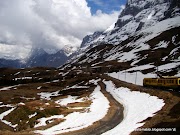Pár hete Bártfán jártunk és az ottani főtéren nézelődve gondolkodtam el azon, hogy mennyi szép téren jártam már Európában. Ezekből szedtem össze most tizenötöt: kihagytam viszont egyrészt a nagyon híres helyeket, másrészt mindent, ami Olaszországban van, mert az ottani terek külön bejegyzést kapnak majd (frissítés: elkészült az olasz bejegyzés is).
We were in the Slovakian town of Bardejov a few weeks ago and as I was looking around its main square, I got to thinking about how many beautiful squares I'd already visited all over Europe. I've now collected 15 of these, leaving out the most famous squares plus all the ones in Italy as they deserve a dedicated post (update: it's ready now).
Grand Place - Tournai (Belgium)
Baščaršija - Szarajevó / Sarajevo (Bosznia-Hercegovina / Bosnia and Herzegovina)
Piata Unirii - Temesvár/Timisoara (Románia / Romania)
Tartinijev Trg / Piazza Tartini - Piran / Pirano (Szlovénia / Slovenia)


















